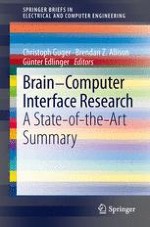2013 | OriginalPaper | Chapter
An Affective BCI Using Multiple ERP Components Associated to Facial Emotion Processing
Authors : Qibin Zhao, Yu Zhang, Akinari Onishi, Andrzej Cichocki
Published in: Brain-Computer Interface Research
Publisher: Springer Berlin Heidelberg
Activate our intelligent search to find suitable subject content or patents.
Select sections of text to find matching patents with Artificial Intelligence. powered by
Select sections of text to find additional relevant content using AI-assisted search. powered by
